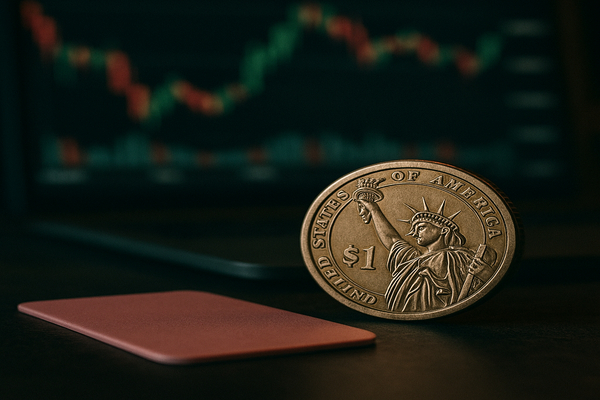
Klarna launches U.S. dollar-backed stablecoin and moves deeper into digital payments at a time regulators are tightening oversight. The news matters now because payments firms face fresh scrutiny while demand for dollar-linked digital tokens remains high. In the short term markets may see heightened trading interest in crypto rails and volatility in fintech stocks. Over the long term this could accelerate tokenised payments and competition across the U.S., Europe, Asia and emerging markets, while testing evolving rules and industry guardrails.
Klarna’s announcement and immediate market signals
Swedish fintech firm Klarna said it will issue a U.S. dollar-backed stablecoin. The firm is the latest major payments company to push further into digital assets as regulators tighten oversight of the sector. The move underscores how traditional payment providers are taking crypto rails seriously. It also signals intensified competition for faster, cheaper cross-border payments.
Markets will watch trading volumes and custody arrangements closely. Stablecoins pegged to the dollar aim to offer price stability compared with other crypto tokens. That can attract corporate treasuries, remittance corridors and payments partners that value predictability. For fintech investors, the announcement can be read as a strategic response to both demand and regulatory pressure. Short-term trading may pick up in fintech-related names and exchange-traded products tied to token activity. Meanwhile, payments platforms and banks will reassess partnerships and infrastructure plans.
Regulatory backdrop: tighter oversight and what it means
The launch comes while authorities worldwide are increasing scrutiny of digital assets. Regulators are pursuing clearer rules for stablecoins, custody and anti-money laundering controls. That rising oversight matters now because it raises compliance costs and shapes product design. Firms issuing dollar-backed tokens will need to spell out reserve composition, audit cadence and redemption mechanics.
Stricter rules can temper reckless expansion, but they also raise barriers to entry. Firms that can meet heightened compliance standards may gain credibility and win larger institutional clients. Conversely, smaller operators could struggle. For markets, regulatory clarity tends to reduce some types of crypto volatility over time, while also creating short-term uncertainty as firms adjust to new obligations.
Global market implications: US, Europe, Asia and emerging markets
Klarna’s stablecoin will have different effects across regions. In the United States, regulators are focused on reserve transparency and banking links. That emphasis will shape how U.S. partners and investors view token-backed payment propositions. In Europe, the move adds to the region’s push to modernise payments infrastructure while complying with regional rules. Asia’s large payments ecosystems and digital wallet penetration could offer rapid adoption paths. Emerging markets may see stablecoins as tools for remittances, dollar access and reducing friction in cross-border trade.
Historically, major payments companies that adopted new rails accelerated adoption by reducing friction for end users. Klarna’s offering follows that pattern and could drive increased real-world use of tokenised dollars. For currency markets, increased stablecoin flows might marginally alter dollar demand in payment corridors. For banks, the development may change clearing volumes and settlement timelines as tokenised transfers present alternatives to traditional rails.
Market reactions, competitor responses and risk scenarios
Investors will parse how Klarna integrates the stablecoin into its product suite. Key questions include custody arrangements, reserve audits and redemption speed. Competitors will weigh similar launches or partnerships with crypto infrastructure providers. If multiple large payment firms roll out tokenised dollars, network effects could accelerate adoption and shift volumes away from legacy rails.
Risks remain. Regulatory actions that restrict stablecoin use or impose steep compliance costs could slow adoption. Operational issues in custody or redemption could trigger reputational damage. On the other hand, transparent reserve practices and robust partnerships with regulated custodians could bolster confidence and attract corporate clients. For markets, both outcomes create news-driven moves in fintech and payments segments, and influence broader investor sentiment toward crypto-related ventures.
What to watch next and market timing
Watch for regulatory filings, reserve disclosures and initial partner announcements. Timely audits and clear redemption mechanics will matter most for market confidence. Also monitor trading volumes on token venues and any bank or payments partners that announce integrations. Central bank statements and policy moves on stablecoin rules will be critical in the weeks ahead.
In addition, headlines from broader macro themes in the same news cycle can affect market reaction. Items on consumer spending, credit conditions and fiscal policy in major economies influence risk appetite for fintech and crypto-linked assets. Policymaker commentary in the U.S., Europe and Asia will shape whether markets treat the launch as a growth catalyst or a regulatory test case.
Overall, Klarna’s stablecoin launch reflects a clear trend: large payment firms are accelerating real-world use cases for tokenised dollars while operating under heavier regulatory scrutiny. Short-term market moves will reflect operational details and regulatory responses. Over the longer term, the episode could mark a tipping point toward broader tokenised payment adoption across multiple regions, provided firms meet transparency and compliance expectations.












